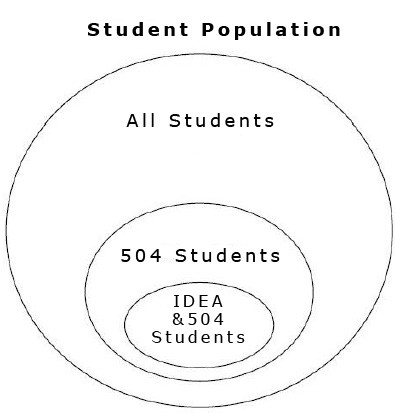 |
| (Source 1) |
Special Education is an integral part of the school system. After talking to Sierra High School in Manteca, California, I feel that it may be an even larger part of the system in the future. I am hopeful that there can be a change in the system that will include all students that are in need of assistance. Although it may be difficult for schools that have a large amount of students, I do believe that the definition of Special Education in Finland is a logical response to our future students. Now why do you ask I think there should be a change? The answer, I feel that cyber-bullying is now an extreme issue that has some dire consequences.
(Source 2)
Finland's definition of Special Education includes students who may be struggling with their self esteem, problems at home, and dealing with bullying in school (Source 8). Some of this success may be due to this fact: "Diagnostic labels for students struggling with learning disorders are rarely used and students receive immediate support when they begin to experience academic difficulty." (S0urce 9) This is important because if a teacher feels that a student needs help for any reason, ie. bullying, then they will be helped and helped quickly. I feel that because of the integration of technology into children's lives there are some downfalls that need to be addressed. Unfortunately, many students use social media, especially those in middle school, to continue bullying outside of school. This type of use must be recognized by teachers and be dealt with before it is too late.
 |
| (Source 3) |
I interviewed a few teachers at Sierra High School and the program specialist for the special education department. During these interviews, I learned an extreme amount of information on California's special education system. For the special education system, I found that there are many rules that need to be changed, but this is undoubtedly controversial subject.
 |
| (Source 4) |
The first person that I was able to interview was the department chair for the special education department. She was incredibly helpful to improve my understanding of the system. She explained to me that the process all starts with either a parent or a teacher noticing a problem with a child in the classroom. Once this has been noticed, the teacher or parent will inform a counselor who will start the process of deciding how to help the child. To make these informed decisions he will set up a Student Success Team (SST) meeting. The students SST includes a counselor, general education teacher and parents. The teacher may feel that only certain accommodations maybe necessary. Once some accommodations have been implemented they may need to began a 504. A 504 is a section of the Rehabilitation Act of 1973. The 504 deals with the anti-discrimination of students with disabilities. After working through a 504 plan they start the Individualized Education Program (IEP). For the student to receive these plans they need to go through an evaluation process. There are two parts in the evaluation process. The first part is a psychological evaluation that is conducted by the school psychologist. The second part is an educational evaluation, at Sierra this is done by the department chair, which involves deciding what areas the student has difficulties. After being given these specifics I asked her "As a future general education mathematics teacher, how can I help the special education students in my classroom?" She was surprised I asked this question because most students that have disabilities have an extremely difficult time in mathematics, so most at Sierra are in special education mathematics classes. She felt that the best way for me to find the answer to this question was to speak to another special education teacher at the school. This teacher told me that it varies based on the students abilities, but the best way to help the students is to have patience and be willing to make accommodations.
 |
| (Source 5) |
The next people I was able to interview were a couple of teachers at the school who had previously referred student. The two teachers that I spoke with are the life skills department chair and an art teacher. I chose these teachers to interview because the special education teacher that I spoke with told me they have referred many students to special education. They both agreed that most of the identification process deals with observation and/or assignments/test. Most clues com from written grammar and sentence structure. Also, they agreed that some students with problems usually give brief answers to these types of questions. The life skills teacher teaches a food science class that includes mathematics and said that the students who struggle with the concept or miss a large amount of problems is a red flag. They both agreed that at Sierra there are many accommodations that teachers will try prior to referring a student for special education. Some of these accommodations are one on one help, peer pairing, reworking an assignment to check for understanding, move students to the front of the room, and contacting parents to see if there is any issues that they need to know about. They both told me that is important to detect the problem as soon as possible and try to help the student in any way that is effective.
 |
| (Source 6) |
The last person I was able to speak with is the program specialist for the special education department. She also agreed with the special education that teachers and parents are the largest sources of referrals. She mentioned that "It is always the goal to serve every student in the Least Restrictive Environment, so every effort is made to ensure that accommodations and modifications have been attempted in the general education setting prior to referral to special education." This was important because it made me feel that as a general education teacher we need to be flexible and aware that these accommodations are a part of our job. We need to be willing to change our lessons for many students in our classroom to benefit their education process. For the progress of the of the child before and after the referral they are assigned a case manager. This case manager is usually the psychologist or a teacher. However, when I was speaking with the special education teacher she mentioned to me that the administration at Sierra take part of the pressure of these cases. She explained that the Vice Principal takes 60% of the cases at Sierra to follow through, the Principal takes 20% and the Assistant Principal takes the last 20%. The Vice Principal mostly deals with the students who are having behavioral problems. The provisions that are made for students depends on the individual needs. There are many provisions available, including special day class, resource classes, speech therapy, adaptive PE, and many others. The level of parent involvement varies greatly. Speaking to the program specialist she told me that the most integral part is the fact that the parent must sign a consent form for all assessments tied to special education. Therefore, they a large part of the students IEP. She and the special education teacher said "If a parent writes a letter requesting testing of any kind, the district has 60 days to assess and hold an IEP meeting. The special education teacher at Sierra indicated that the parents of the students in special education at this school are constantly in touch with them. They usually speak with the parents at least once a week.
 |
| (Source 7) |
References:
1. http://rhonda3.edublogs.org/files/2011/03/Special-Education-1-uo2ulj.png
2. (2012, 20). YouTube. YouTube - Special Education - AntiBullying PSA. Retrieved February 07, 2014, from http://www.youtube.com/watch?v=qPlaMin9n34
3. https://blogger.googleusercontent.com/img/b/R29vZ2xl/AVvXsEjziPQP5Yzg83CtXy6iFXVthc-CbCbnr8ZKWQ7y0Aa9QJmPkbYgQox5Es8783ALLSdJAxz0WJirYTXsHPyjgswtEK2OcvrKjQDV8cVjFrYgKFg_LjXYj88DjuDRWuRMwUQ28K7qOTXgAF4/s1600/cyber-bullying+3.jpg
4. http://www.westonranchhomes.com/images/gallery/image_020.jpg
5. http://www.wrightslaw.com/blog/images/504.diagram.jpg
6. http://media.salon.com/2011/05/death_to_high_school_english-460x307.jpg
7. http://www.pacer.org/parent/images/ParentsNeedToKnow.jpg
8. (2012, 25). YouTube. YouTube - Finland's Formula for School Success (Education Everywhere Series). Retrieved February 07, 2014, from http://www.youtube.com/watch?v=HsdFi8zMrYI
9. Kinlan, C. (2011, 21). Hechinger Report | Informing the Public about Education through Quality Journalism. Rethinking special education in the U.S. | Hechinger Report. Retrieved February 07, 2014, from http://hechingerreport.org/content/rethinking-special-education-in-the-u-s_5003/
No comments:
Post a Comment